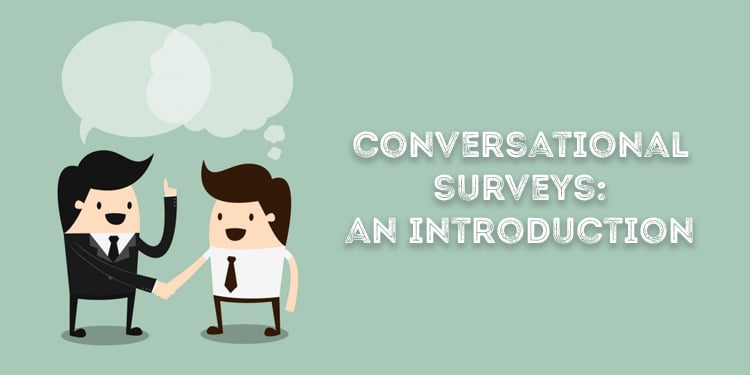
Source: Wizu
Customer feedback. Every company needs it. Every customer has an opinion. So how do you go about collecting it? Well usually the best way to collect a large number of opinions is via a survey. Unfortunately, surveys are incredibly boring to fill in. Most of us get multiple survey invitations a day and they all look the same. Even if you did take the time to complete it, you would be lucky if they even scratched the surface of your experience. So, what’s the answer?
Conversational Surveys – The Saviour of Surveys
An interview with a customer will always give you much more insight than a basic online survey but who has the time to be interviewing all their customers? A chatbot, however, can have a conversation with your customers at scale. No extra resources needed and a huge improvement on the survey experience. A chatbot can be an artificial interviewer that is able to identify key topics and follow up on them in a similar way to a human interviewer. This allows you to generate better quality insight while delivering a better experience for the respondent.
So How Does It Work?
You set up a conversational survey a bit like a traditional survey. You have core set of metrics to collect and questions you want to ask. You add your questions, answer options and any logic routing required. A standard survey would then show a long matrix of rating questions or a progress bar that slowly moves along after each question you answer. A conversational survey replicates the kind of interface customers are using every day with Facebook Messenger and WhatsApp. A question is asked and then the chatbot can react differently depend on the response given. Rather than a progress bar you simply show the general topics you are going to be discussing and the questions asked can vary depending on how the respondent answers.
What About Artificial Intelligence?
Well I am glad you asked. A conversational survey alone is a big improvement on traditional surveys but throw some AI in the mix and you are on to a winner. Artificial Intelligence can analyse open text responses in real time, identifying the topic being discussed and the sentiment being expressed. It can automatically probe for further details or route to varying paths depending on the open text responses being provided. This adds a whole extra layer of insight to your surveys and a unique level of interaction.
Doesn’t That Just Mean More Data To Analyse?
Another good question! Well yes, the upside of conversational surveys is that you gain more fantastic customer insight to analyse. That doesn’t mean you have to dedicate huge resources to reading through the comments and picking out the trends though. Text Analytics will do the job for you. All your responses are being analysed to pick out the common trends, the areas with the biggest negative emotional impact and the common phrases being used to describe them. This means you are getting instant actionable insight that is identifying not only the root causes of any issues but also telling you exactly the type of language your customers are using to describe it.
What Are The Advantages?
Quite simply a conversational survey just offers a better experience for your respondents. They provide a more interactive and personalised survey while allowing companies to collect more comprehensive insight. Conversational surveys can also close the loop by offering relevant reactions or routes depending on the responses given. By talking with a chatbot it makes the experience more social and helps respondents to feel their feedback is being listened to and valued.
Conversational surveys also offer much higher completion rates. At Wizu we are typically seeing a 4 or 5 times increase in completion rates when replacing a traditional online survey form. This means you are getting higher volume, better quality responses. By having a conversation you are also allowing the respondent to provide their views in their own voice, rather than just selecting from a range of options you have dictated.
Conversational surveys are the future of surveys. They can be used for customer experience surveys aswell as market research, employee engagement and anywhere else that tired, traditional surveys are no longer performing.



